
By Martin North, cross-posted from the Digital Finance Analytics Blog
Today we start to look at annuities in Australia. This follows on from our look at the UK’s Annuity Mess recently. In Australia the annuity market appears undeveloped, but in the light of regulatory change, rising superannuation balances and self-managed superannuation, we review the likely prospects. Initially we will look at the demand side and outline the results from our recent household surveys, and later we will also look at the current market context and supply issues.
We started by looking at households retirement needs and plans. Here are the results by age bands across Australia. We won’t cover the significant state differences here. We started by asking them how long they hoped and expected to be in retirement. Most were in the range 25-30 years.
 We then asked how much monthly income, they thought they will need in retirement. (We did not test whether this was sufficient, taking into account rising costs of living and healthcare bills – that’s a story for another day)
We then asked how much monthly income, they thought they will need in retirement. (We did not test whether this was sufficient, taking into account rising costs of living and healthcare bills – that’s a story for another day)
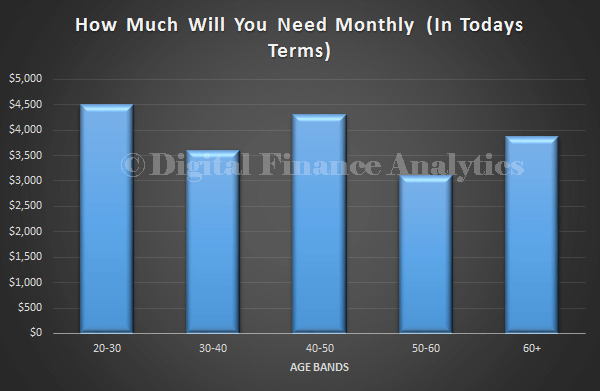 We then asked them how much they thought they would need as a capital sum to invest to deliver the monthly return they wanted, assuming no other sources of income.
We then asked them how much they thought they would need as a capital sum to invest to deliver the monthly return they wanted, assuming no other sources of income.
 We built an annuity calculator, which enabled us to show households the consequences of their answers. For example, here is the plot of the result for those 60+. The blue area shows the savings balance (RHS), and the yellow line the monthly income (LHS).
We built an annuity calculator, which enabled us to show households the consequences of their answers. For example, here is the plot of the result for those 60+. The blue area shows the savings balance (RHS), and the yellow line the monthly income (LHS).
 We built assumptions into the modelling, that income should be inflated by 3% each year (keeping pace with inflation) and that net growth will be at 4%. In this scenario, the investment would only fund 15 years. If we re-run the scenario with 8% growth, the picture improves, to cover 21 years. Both shorter than the expected length of life.
We built assumptions into the modelling, that income should be inflated by 3% each year (keeping pace with inflation) and that net growth will be at 4%. In this scenario, the investment would only fund 15 years. If we re-run the scenario with 8% growth, the picture improves, to cover 21 years. Both shorter than the expected length of life.
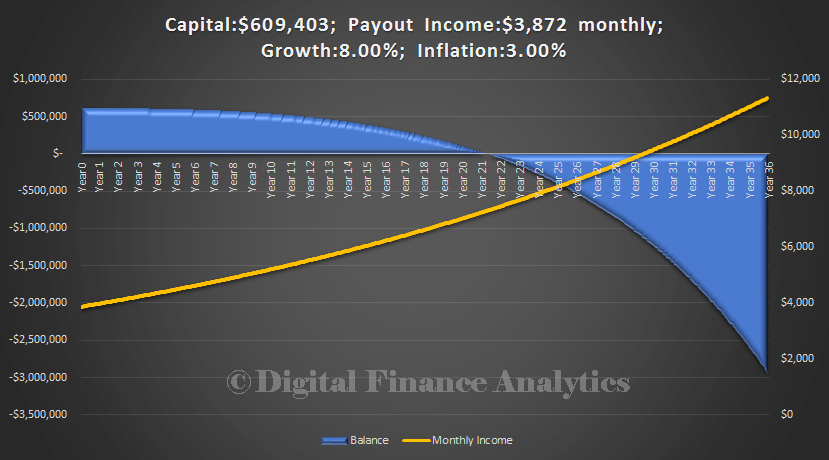 The worst case answers came from those aged 20-30. Their investment pot would only last about seven years. Householders who participated in our surveys were astonished by how the mathematics worked, but were clearly unable to equate income and savings over time.
The worst case answers came from those aged 20-30. Their investment pot would only last about seven years. Householders who participated in our surveys were astonished by how the mathematics worked, but were clearly unable to equate income and savings over time.
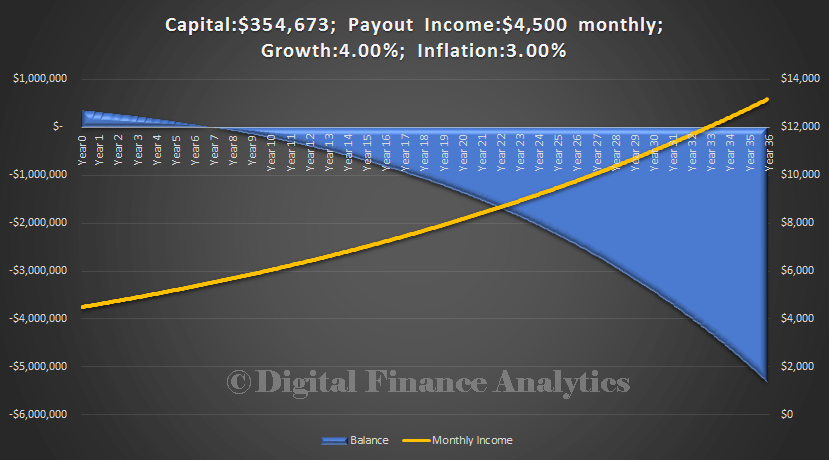 We conclude that many households have a poor grasp of the economics of retirement. They need to save more than they think they do. This is because current life expectations are extended, and the effects of inflation and returns compound. Education is required.
We conclude that many households have a poor grasp of the economics of retirement. They need to save more than they think they do. This is because current life expectations are extended, and the effects of inflation and returns compound. Education is required.
So would an annuity, which guarantees a payment flow over time be attractive to them?
We asked about their attitudes to annuities. Most said they did not understand them, thought they would get ripped off, and were a poor choice because they wanted to keep control. They also made the point that governments might change the rules on them, and in any case nearly 80% said they would rely on government pensions to see them through.
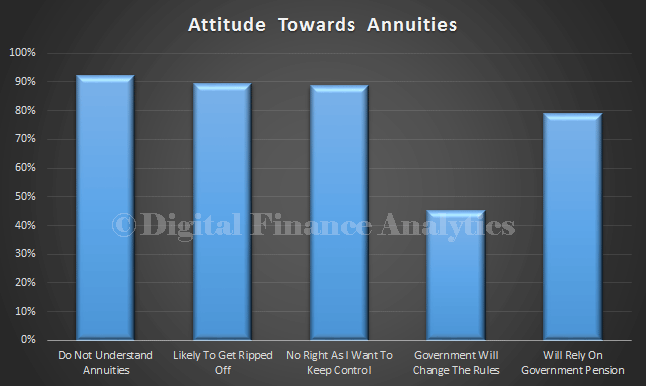 We also asked the more direct question, would households consider annuities (once we explained what they were!)
We also asked the more direct question, would households consider annuities (once we explained what they were!)
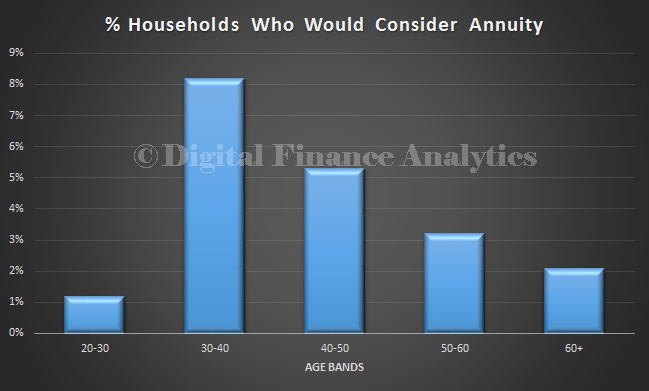 The bottom line is that not many households are interested at the moment. Younger households might be, but of course later in life. So the demand side of the equation suggests that annuities will not be the product of choice for many anytime soon.
The bottom line is that not many households are interested at the moment. Younger households might be, but of course later in life. So the demand side of the equation suggests that annuities will not be the product of choice for many anytime soon.
The broader issue of a mismatch between savings and income expectations, and future life expectancy is a bigger and more serious issue, as the government will not be able to afford to extend support to the every growing ranks of baby boomers who have exhausted their superannuation savings. This looks like a significant issue which requires significant changes in education and perhaps policy.
Later we will look at the supply side issues relating to Australian annuities.

